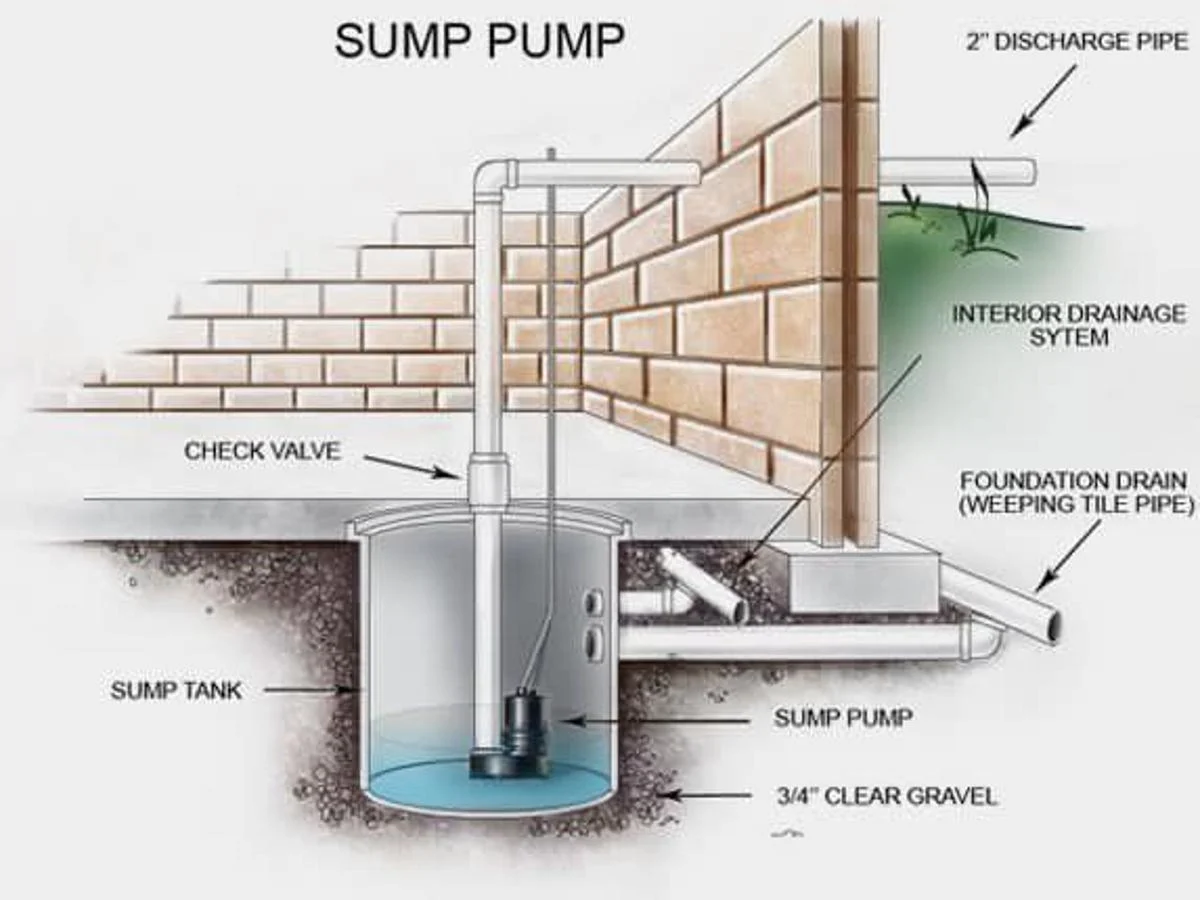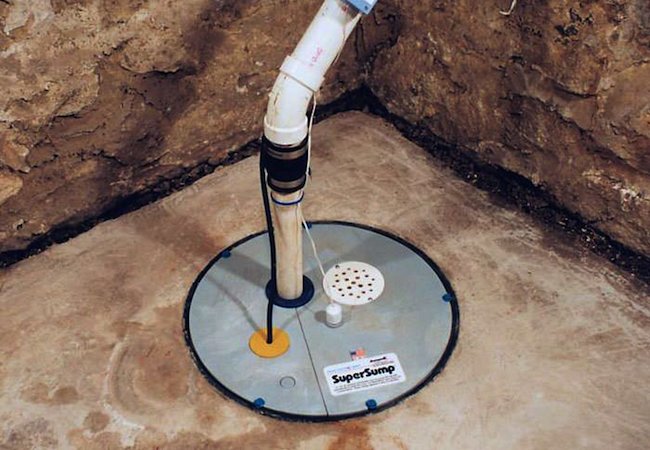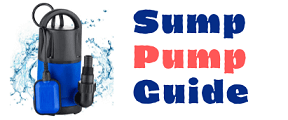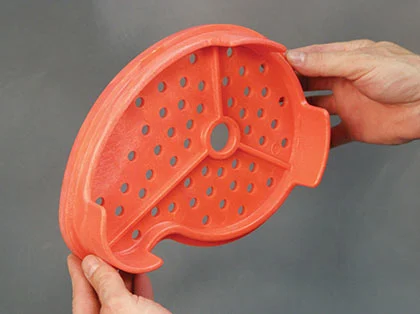A sump pump is a type of pump that removes the accumulated water from the house.
Rising water because of heavy rain will affect the building. It also causes enormous repair costs.
A sump pump will help you in protecting your house from heavy rain and reduce the risk of damages and repairs.
The sump pump is usually installed at the lowest point of the house like the crawl space or basement.
A sump pump may look small and simple but it helps you in saving money and it also helps you in insurance premiums.
Benefits of a Sump Pump:
- Prevent the house from flooding
- Protect the sewage backups
- Reduces the growth of mildew and mold
- Prevents the basement from rainwater
- Reduce the level of humidity and increase the quality of indoor air
How does a Sump Pump work?
A sump pump removes water from the basement of the house. So, the experts recommend installing it in a small pit called a basin.
There are many important parts to a sump pump. One of those important parts is the valve which senses the pressure or the level of rising water.

If the water level increases beyond a particular limit then the sump pump starts to pump the excess water out of the house.
The effluent line connects the sump pump with the drainage line.
The water from the sump pump is usually discharged to a pond, creek, or dry well.
Selecting the drain point is also very important. Always choose a place far away from the house.
If your city has building codes then follow the guideline to set the drain point.
If the drain point is far away from the house then use an extended hose and also increase the power of the sump pump.
Types of Sump Pump
There are different types of sump pump available in the market.
It is important to find the right sump pump based on the needs of the house.
Each house should have one primary sump pump and one backup sump pump.
The primary sump pump will perform all the main work and if the primary sump pump fails then the backup pump will start working.

Now let us discuss some of the common types of sump pumps available in the market.
Pedestal Sump Pump:
The pedestal sump pump has a separate pump and motor. The motor is placed on the pedestal, above the basin. The pump is placed inside the basin. The motor and the pump connect through a hose.
The pump removes the water and sends it to the drain point. The lifespan of the pedestal sump pump is more when compared with the other sump pump because the motor is kept separate in the pedestal area.
The maintenance of the pedestal sump pump is also very easy because the motor is easily accessible.
But the operating sound of the pedestal sump pump motor is louder and it also needs an extra place for fitting the motor in the pedestal area.
The pedestal sump pumps are less expensive when compared with the other sump pump types.
Some experts report that the reliability of the pedestal sump pump is less when compared with the submersible sump pump.
Submersible Sump Pump:
Submersible sumps pumps are very bulky since it contains the motor and the pump in a single unit. The submersible sump pumps are kept inside the basin.
Since the motor is also submerged in the basin these types of sump pumps are quieter than the pedestal type.
This type of sump pump also saves space in the basement. The clogging problem in the submersible sump pumps is less when compared with the pedestal type.
The lifespan of the submersible sump pump is less when compared with the other type because of the effect of water submersion.
Maintenance of the submersible sump pump is also difficult because the motor and the pump are not easily accessible. The submersible sump pumps are more expensive.
If your house is in a flood-prone area then it is best to buy a submersible sump pump.
Battery operated backup:
The battery-operated backup is the common backup type. The battery-operated backup provides extra security from the damages caused by the flood. It does not replace the primary sump pump instead brings it to life.
The battery-operated backup has a float switch which allows the sump pump to work even without power.
This facility is very useful because during storms there will be no power and that is the time when you need the sump pump.
When the water rises above a particular level in the basin the float switch is triggered and it puts the battery into function.
Water-powered backup:
In this type, the water in the basin is removed through increased pressure of the water.
Water-powered backup uses the old type of water pressure instead of an electrical connection. Unlimited runtime is the main advantage of the water-powered backup.
The house owners need not check the water power backup or replace the battery. Water power backup needs strong water flow for its functioning.
This is the main drawback of this type. If the water pressure in your house is low then this backup type will not function.
The installation of water-powered backup is very challenging when compared to battery-operated backup.
Some city authorities do not permit installing water-powered backup.
Do I need a Sump Pump?
If you have a basement, the answer is probably yes.
A sump pump is a handy device that helps keep your basement dry by pumping water out of the sump basin and away from your home.
Sump pumps are usually installed in homes with basements, but they can also be used in homes with crawlspaces.
If you have a crawlspace, your sump pump should be installed in the lowest part of the space.
What size pump do I need?
The size of your sump pump depends on the size of your home and the amount of water that needs to be pumped.
A good rule of thumb is to choose a pump that can move 1 gallon of water per minute for each square foot of basement or crawlspace.
Choosing a Sump Pump?
There are a few key factors to consider when choosing a sump pump.
One of the most important is the pump’s capacity, or how much water it can pump out per hour.
You’ll also need to consider the type of sump pump you need: a pedestal pump, submersible pump, or combination pump.
Once you’ve determined the capacity and type of pump you need, there are a few other factors to consider.
The first is the size of the sump pit. You’ll want to make sure the pump can fit comfortably in the pit and that there is enough room for it to move around.
You’ll also need to consider the height of the sump pump. If you have a high water table, for instance, you’ll need a sump pump with a high lift capacity to get the water out of your sump pit and into wherever it needs to go.
Depending on whether or not you’re renting your home, you may also want to consider non-permanent pumps that can be disconnected and removed when you move.
Selecting the right sump pump is very important and choose the horsepower of the sump pump based on the flooding level. If you install a sump pump with less horsepower then you may still be at the risk of flood damage.
Choosing a sump pump with more horsepower will cause short cycling and it also reduces the lifespan of the sump pump.
Each sump pump has a label with a reference of their water discharge level. So before choosing refer to the label and select the sump pump based on your need.
Cost of Installing a Sump Pump:
The cost of installing a sump pump differs based on various factors. But on average, the cost of a basement submersible sump pump is from $100-$400.
If you are buying for commercial usage then it may cost you more than $500. The cost of the sump pump differs based on the size, horsepower, and extra facilities.
The cost of installing a sump pump depends on various factors like the material of the house basement, the distance to the drainage point, the cost of permits, and the labor cost.
Always hire a professional and experienced person for installing the sump pump.
How long do sump pumps last?
The average lifespan of the sump pump is 10 years.
The lifespan of the sump pump may be affected because of various reasons like the cleanliness of water, acidity, and level of maintenance.
The sump pump must be serviced once every 6 months.
Maintaining a Sump Pump
Pump maintenance is another important consideration. If the sump pump system has a float switch, is it easy to remove and clean? You’ll also want to consider if the pump comes with a manual switch as an emergency backup in case your power goes out.

Some models have both switches built into one unit, which can be helpful if you’re not comfortable working with electricity.
To keep your sump pump in good condition:
- Conduct periodic inspections and testing of the system.
- Keep the wiring in good condition. If you have the capacity to do so, consider installing a backup generator if your sump pump is electric.
- Periodically clean debris from your sump pump, pit liner, or tankless water heater, because it can impact performance.
- If you have a backup sump pump, conduct tests on it periodically to ensure that it will function correctly if needed.
When shopping for a sump pump, it’s important to consult with an expert who can help you determine the best pump for your needs.




